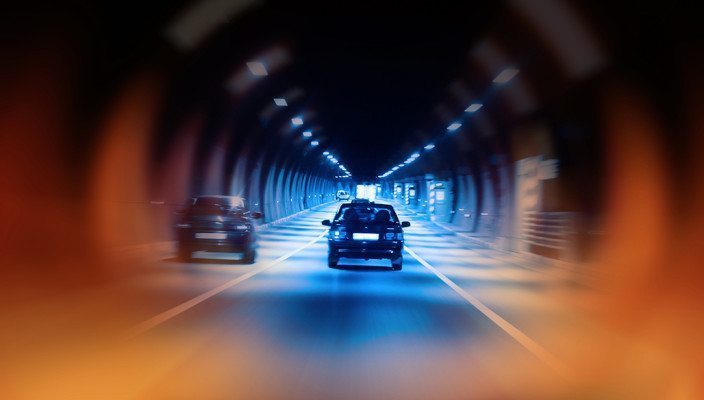Fleet Management: The Shape of things to come…
Jul 13, 2014 • Features • Fleet Technology • google cars • fleet management • smartvan • telematics
The fleet management industry has seen some radical changes in recent years but the future promises to deliver innovations far beyond anything we have seen so far. Our friends at SmartVan.com have been taking a closer look at the technologies that will shape fleet management in the not so distant future…
Field service technicians are road warriors who often spend a lot of time behind the wheel. But those hours spent driving to the next service call (or sitting in traffic) can mean overtime for techs who need to finish the day’s work. A new wave of Internet-connected vehicles, however, could turn the field service engineer’s vehicle into a mobile office.
“This year is a tipping point,” Gartner analyst Thilo Koslowski told The Wall Street Journal. “There has been a lot of talk about apps in cars, but from 2014 forward, the revolution really happens.”
Here are a few features that drivers can expect to find in their next work truck or van:
4G high-speed Internet: Next year, GM and Audi are set to release automobiles with high-speed Internet and touch-screen dashboards, so drivers won’t even need to look at their smartphones.
In-car app store: BMW is developing an app store, similar to the iTunes App Store, to enable users to purchase mobile apps for their vehicles.
Vehicle data tracking: Automobile manufacturers are working with software developers to pull data from the cars themselves, such as MPG data, idling information as well as driver behaviour.
With these high-tech updates, field service engineers should no longer be stranded without a connection. Of course as with other advances in telematics this will also lead to bigger improvements in driver safety.
We’ve been working toward the goal of vehicles that can shoulder the entire burden of driving - Chris Urmson, Director of Google’s Self-Driving Car Project
While not a comforting thought, it’s a reality for field service technicians who are juggling full schedules, heavy traffic and route navigation, to name a few.
Yet, this very human issue of distracted driving may soon be a thing of the past. Recently Google showed off a prototype of its self-driving car, a vehicle without a steering wheel, gas or brake pedal, “because they don’t need them,” Google announced.
While the current prototype can only go as fast as 25 mph, the promise for the future of fleet management could include better route and fuel efficiency, safer driving, and giving field service engineers the ability to answer email and work while on the road.
For urban fleets, the vehicle could even drop the field tech off at the service location, go find parking for itself and then be summoned to pick the tech up once the call is finished. This scenario, however, is contingent on the California Department of Motor Vehicles (and then beyond) adjusting their regulations for autonomous vehicles to allow them to travel without a licensed human driver behind the wheel.
“Ever since we started the Google self-driving car project, we’ve been working toward the goal of vehicles that can shoulder the entire burden of driving,” Chris Urmson, director of Google’s Self-Driving Car Project. “Just imagine: You can take a trip downtown at lunchtime without a 20-minute buffer to find parking. Seniors can keep their freedom even if they can’t keep their car keys. And drunk and distracted driving? History.”
One challenge to overcome whilst we await for the robot car revolution is that while night driving is inevitable, it comes with an increase in safety risks for drivers.
Well-lit roads are vital for preventing accidents and keeping drivers safe, but governments have struggled with the costs of maintaining street lamps. In the Netherlands, for example it has been reported in the government is shutting down streetlights at night to save money.
To solve this, designer Daan Roosegaarde has partnered with Heijmans, a Dutch civil engineering firm, to create interactive highways that are lit at night with luminescent paint that allows them to glow in the dark. Says Roosegaard, “This road is about safety and envisaging a more self-sustainable and more interactive world.”
A 500-meter stretch of a Dutch highway is the first real-world test case for these technologies.
The green glow in the dark paint charges in the daylight and can glow for up to 8 hours at night. However, the project still has some questions to be asked b efore being accepted as a viable alternative to elective lighting. For example, does the product perform on short winter days and long nights or under overcast and cloudy conditions?
Regardless it seems certain that the future of fleet management is set to see changes in the near future.





















 Field Service News is published by 1927 Media Ltd, an independent publisher whose sole focus is on the field service sector. As such our entire resources are focused on helping drive the field service sector forwards and aiming to best serve our industry through honest, incisive and innovative media coverage of the global field service sector.
Field Service News is published by 1927 Media Ltd, an independent publisher whose sole focus is on the field service sector. As such our entire resources are focused on helping drive the field service sector forwards and aiming to best serve our industry through honest, incisive and innovative media coverage of the global field service sector.
Leave a Reply